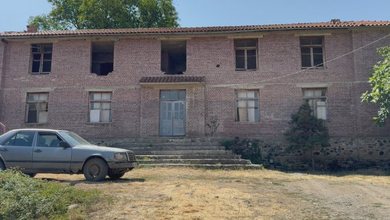
TIRANA- Albania last year had the lowest level of labor productivity in the Region and one of the lowest in Europe. According to data from the International Labor Organization (ILO), the Gross Domestic Product per hour worked in Albania last year was estimated at 16.5 international dollars. This indicator has increased by 18.2% compared to 2023, but the gap with neighboring countries in the region still remains considerable.
Labor productivity is usually measured as the ratio of the value of output to the time spent producing it. Comparative statistics use the international dollar as the unit of measurement, a hypothetical monetary unit used in purchasing power parity.
Among the countries in the region, Albania is preceded by Bosnia and Herzegovina, with $26.5, Serbia, with $28.8, North Macedonia, with $33.6, and Montenegro, with $37.5.
ILO statistics do not provide information for Kosovo. Albania ranks second to last in all of Europe, leaving only Moldova behind.
The main factors determining the level of productivity are investments in technology and automation, innovation and the quality of human capital or the skills of the workforce. The structure of the economy and the weight in it of sectors that generally enable a greater value added per unit of working time can also have an impact.
The countries with the highest labor productivity in the world are Luxembourg, with $166.1 per hour, followed by Ireland, with $139.1 per hour, and Norway, with $123.6.
ILO data shows that in general, countries that can access a lower-cost labor force also have lower labor productivity. For example, China, despite being one of the largest economies in the world, has labor productivity almost at the same level as Albania.
Even in our country, low labor costs and high informality have not created many incentives to increase productivity in the decades after the fall of communism. Due to low wages, enterprises have felt little pressure to invest in equipment and technology, which would allow for increased production without increasing labor costs.
In recent years, the decline in the share of manufacturing and the increase in the share of tourism in the structure of the economy appear to have positively impacted productivity in the Albanian economy. However, Albania still lags significantly behind the economies of the region and Europe.
Another problem for the Albanian economy has been the skills of the workforce. The declining quality of the education system, the mismatch between demand and supply, and high emigration among young people have negatively affected the skills of the workforce.
Improving labor productivity is closely linked to wage levels. Low productivity does not create real opportunities for high wages, so improving this indicator is essential for increasing the well-being of a country. On the other hand, the pressure from the labor market for wage increases (as has happened in Albania in recent years) may create more pressure for the need to increase labor productivity, so that businesses can maintain competitiveness./ MONITOR






















